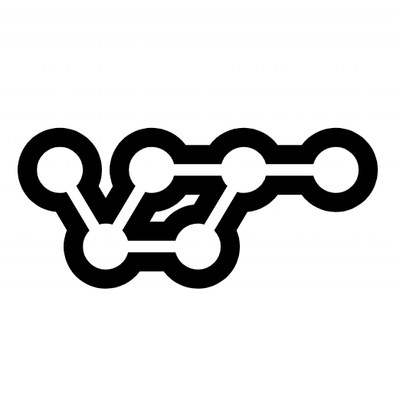
Security News
vlt Launches "reproduce": A New Tool Challenging the Limits of Package Provenance
vlt's new "reproduce" tool verifies npm packages against their source code, outperforming traditional provenance adoption in the JavaScript ecosystem.
deployment
Advanced tools
Continuous deployment for the masses. Download the latest version of your GitHub package, run tests and deploy to the specified directory. Run a deployment server to launch deployments from the internet, and integrate with GitHub easily. Includes an API t
Continuous Deployment for the masses.
Download the latest version of your git package, run all tests and deploy to the specified directory. Run a deployment server to launch deployments from the internet, and integrate with GitHub easily. Send email notifications for every deployment, successful or failed.
Includes an API to fire deployments from an external source.
Install from npm:
$ npm install deployment
Or add to your package.json as a dependency. For easier access to commands, install the package globally:
$ npm install -g deployment
For manual installation, download from GitHub:
$ git clone https://github.com/alexfernandez/deployment
Install node modules:
$ cd deployment
$ npm install
And you are done!
There are three basic ways to start a deployment.
To start a deployment from the command line:
$ node bin/deployment.js
If you installed the package globally you can just use the command deployment-run:
$ deployment-run
Will launch a deployment, using the current directory as deployment directory. If no test directory is given, the deployment will just download the latest code and put it in production.
When a test directory is given:
$ node bin/deployment --testdir "../test/package/"
then package tests will be run first, and only if they succeed will the deployment proceed. A deployment directory can also be given:
$ node bin/deployment --dir "package/"
Command line options are:
--quiet: do not show log messages.
--dir [path]: deploy to the given directory, defaults to the current directory. This directory must already have a copy of the git repository being deployed.
--testdir [path]: use the given directory as test environment, no default. This directory must already have a copy of the git repository being deployed.
--exec [command]: run the given command after deployment, to restart the service.
You can start a web server that will listen to deployment requests, by default on port 3470:
$ node bin/server.js --dir .
Again, if you installed the package globally you can just use the command
deployment-server:
$ deployment-server --dir .
At the very least a deployment directory must be given with --dir.
A token can also be specified:
$ node bin/server.js --dir . --token wydjzfoytrg4grmy
Otherwise a random token will be automatically generated. Any requests coming in with the special, magic token will result in a deployment. From localhost use this URL:
http://localhost:3470/deploy/wydjzfoytrg4grmy
You should see an OK message, or "Bad request" if an incorrect URL is sent.
Options are the same as for deployment, with a little change and a few additions:
In the case of the server a deployment directory needs to be explicitly given, or no production deployment will be done. A test deployment may still be done. This will be explained later, in the section about distributed deployments. If no test directory and no deployment directory are given, the server will complain at startup.
If no token is passed then a random token will be generated and shown on startup.
Why use a random URL for deployments? If you use a predictable URL any third parties might guess it and launch deployments on your server, which may not be what you want.
The deployment server can send emails each time a deployment is run. These parameters contain the whole configuration to access an SMTP server. Example:
--from alexfernandeznpm@gmail.com --to alexfernandeznpm@gmail.com
--user alexfernandeznpm@gmail.com --password [REDACTED]
--host smtp.gmail.com --ssl true
to send email using a Gmail account.
A manual deployment can be started using the same URL as before, but ending in 'manual':
http://localhost:3470/wydjzfoytrg4grmy/manual
In this case you will see the output of all deployment phases, and the result.
Ideally you should start your deployment server when your system starts up.
Ubuntu: in samples/upstart-deployment-server.conf you have a sample Upstart task to start your deployment server running and keep it running.
You can also start a deployment using the API:
var deployment = require('deployment');
var options = {};
deployment.deploy(options, function(error, result)
{
if (error)
{
log.error('Error: %s', error);
return;
}
log.info('Success: %s', result);
});
The following options are available:
An optional callback function(error, result) is called after the deployment
finishes, either with an error or (if successful) with a result string.
The deployment process is standardized as follows:
As console commands, the sequence would be: $ git pull /home/af/projects/test/x $ npm install /home/af/projects/test/x $ npm test /home/af/projects/test/x $ git pull /home/af/projects/x $ npm install /home/af/projects/x
You will note that we have not mentioned any restart as part of the deployment process. By default the deployment package does not deal with service restart, so how does the new code enter into service? There are several alternatives.
First, the deployment package can be configured to run a specified command, passing it an option deploymentCommand from the API.
You can restart an Upstart task, reboot an init.d service or run any other command you need.
Second, the service could be run using supervisor, which would restart the service automatically
right after downloading the new code.
Another option is to run your services in cluster mode, rebooting each worker after a specified time. This scheme does not mesh well with database schema updates, or any other irreversible changes.
Now we will review three basic scenarios where the deployment package can help you: simple deployment from GitHub, deployment with tests, and distributed deployments. We will see a detailed, step-by-step tutorial for each scenario.
You just have a single server where you want to deploy your latest version after each push to a GitHub repository. You just need to start the deployment server in the directory where the deployment is going to happen:
$ cd [deployment dir]
$ deployment-server --dir . --token vurrbab8rj780faz
You need to supply a fixed token so that the resulting URL can be used as a GitHub webhook. Your endpoint will now be http://localhost:3470/deploy/vurrbab8rj780faz.
To generate a random token just run the deployment server without one:
$ deployment-server --dir .
[...] INFO Creating random token: 21wlpjt6ay2liapp
This token should be sufficiently random. You can also just write at your Bash console:
$ echo "$(head -c 16 /dev/random | base64 | tr '[A-Z]' '[a-z]' | sed 's/\/\+//g' | head -c 16)"
There is a sample Bash command in samples/generate-token.sh, for your convenience.
You can access your deployment server from within your local network,
replacing localhost with your local IP address, e.g.:
http://192.168.1.5:3470/deploy/wydjzfoytrg4grmy
When your server can be reached from the internet you can its your domain name:
http://myserver.test.com:3470/deploy/wydjzfoytrg4grmy
The resulting external URL can be added as a webhook to GitHub to run an automated deployment every time new code is pushed to the server.
Make sure that the chosen port (3470 by default) is accessible from the outside. You can also use nginx or a similar webserver to proxy connections from port 80 to your chosen port. With nginx you would include something like this in your nginx.conf (replace with your actual token):
location /deploy {
proxy_read_timeout 200s;
proxy_connect_timeout 2s;
proxy_pass http://127.0.0.1:3470;
proxy_set_header Host $host;
proxy_set_header X-Forwarded-For $proxy_add_x_forwarded_for;
}
So you can now use the default HTTP port 80:
http://myserver.test.com/deploy/wydjzfoytrg4grmy
Coming soon.
Coming soon.
FAQs
Continuous deployment for the masses. Download the latest version of your GitHub package, run tests and deploy to the specified directory. Run a deployment server to launch deployments from the internet, and integrate with GitHub easily. Includes an API t
The npm package deployment receives a total of 14 weekly downloads. As such, deployment popularity was classified as not popular.
We found that deployment demonstrated a not healthy version release cadence and project activity because the last version was released a year ago. It has 1 open source maintainer collaborating on the project.
Did you know?

Socket for GitHub automatically highlights issues in each pull request and monitors the health of all your open source dependencies. Discover the contents of your packages and block harmful activity before you install or update your dependencies.

Security News
vlt's new "reproduce" tool verifies npm packages against their source code, outperforming traditional provenance adoption in the JavaScript ecosystem.

Research
Security News
Socket researchers uncovered a malicious PyPI package exploiting Deezer’s API to enable coordinated music piracy through API abuse and C2 server control.

Research
The Socket Research Team discovered a malicious npm package, '@ton-wallet/create', stealing cryptocurrency wallet keys from developers and users in the TON ecosystem.